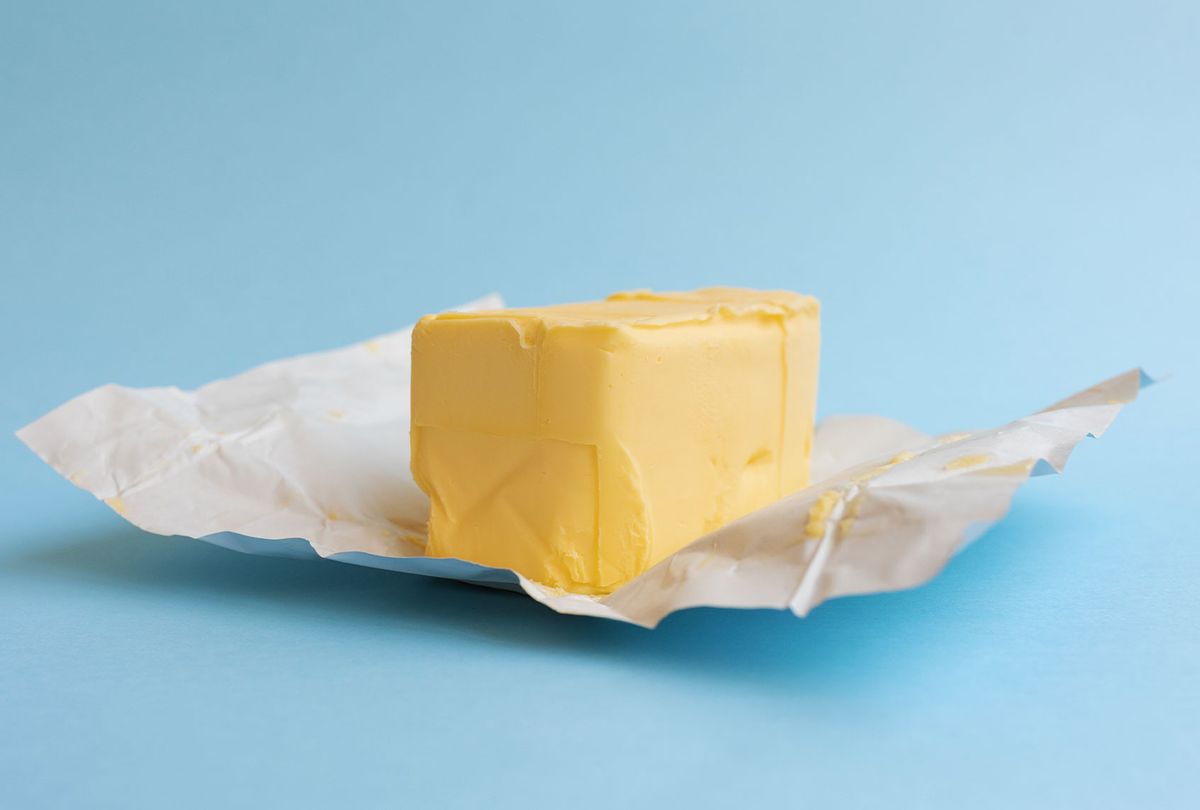If butter had a patron saint, it would have to be Julia Child. The beloved cookbook author and TV host once famously quipped, "With enough butter, anything is good." But how good is the butter that's currently sitting in your refrigerator?
I was thinking about this the other day as I rolled my cart past the dairy section of my local grocery store. There were rows and rows of pastel-hued boxes, paper-wrapped rolls and plastic tubs containing butter — and they ranged from basic commodity butter to artisan varieties.
To get a handle on what makes a better butter, I reached out to Venae Watts, a fifth-generation buttermaker who is the co-owner of Minerva Dairy in Ohio. Minerva Dairy, which has been in business for 125 years, is America's oldest family-owned creamery.
"We do everything we can to give customers a creamier, richer butter," Watts said of the creamery's products. This is achieved by paying attention to everything from the butterfat content to the diet of the cows whose milk is ultimately used to make the butter.
Here are the five tips you should consider before picking up your next batch of butter at the grocery store:
Check out the butterfat content
Your average supermarket stick of butter is going to have about 80% butterfat. The butter made at Minerva Dairy, however, contains 85% butterfat — and those few percentage points make a big difference when it comes to flavor and texture.
You've likely heard the phrase, "Fat is flavor." It's certainly true when it comes to butter. Butters with a higher level of butterfat tend to have a fuller, richer taste. They also have a softer, smoother texture, which make them ideal for spreading on toast.
Some butter brands list the butterfat content on their packaging, but there are also industry terms that denote the present amount. American butter contains a minimum of 80% butterfat, European butter contains at least 82% butterfat and Amish butter contains between 84% to 85% butterfat.
The fewer ingredients, the better
"We've been doing this for five generations, so we know how to make butter," Watts said with a laugh. "And we keep it very simple — we just use sea salt and cream."
As with many foods, fewer ingredients often signal a higher level of quality here. Keep an eye out for additives on the nutrition panel, plus sneaky additions like canola oil, which increase spreadability in lower butterfat butters.
Pay attention to the color of the butter
When I'm grocery shopping, I — like many people — am immediately drawn to the most vibrant piece of fruit or vegetables on display. A ruby red tomato is naturally more appealing than a rust-colored and bruised tomato. The color is an indication of the quality and freshness of the produce.
Similarly, you can learn a lot about butter by its color, as it can be an indicator of the diet of the cow whose milk was used to make the butter. Pasture-raised cows who eat a grass-fed diet rich in plants and greens yield milk that ultimately creates a more yellow butter. This is because those plants are naturally rich in beta-carotene (the red-orange pigment that's found in many vegetables like carrots).
However, do be sure to take a look at the ingredients list on your butter box. Some manufacturers add beta-carotene or artificial coloring to their products to give them a sunny yellow color.
Churn down for what
At high-volume butter factories, air can become trapped in butter as it's churned in large batches at high speeds. "When air is trapped in the butter, it loses texture and flavor," Watts said.
When butter is made in smaller batches and churned slowly, it maintains its flavor and a richer, more velvety texture. Look for butters advertised as "small batch" or "slow churn" on your next trip to the grocery store or farmer's market.
Check out the creamery that made your butter
This may feel like homework, but I believe it would be better for all of us if we paid more attention to where our food comes from and how it gets to us. Before you purchase your next stick or roll of butter, do a little research on brands you like — or brands that are local to you — and find out more about the creameries that make them.
What techniques do they use to make the butter? Where do they source their milk? What kind of relationships do they have with their farmers? For instance, Minerva Dairy works with about 50 family farms with pasture-raised cows.
"A lot of them, we've known for generations — my grandpa knew their grandpa," Watts said. "There's not a lot of people who 'get into dairy farming.' Usually, it's a family farm that's passed down for generations. Northeast Ohio is very unique in the sense that we have the most concentrated amount of small family farms in the country."
Through the years, there's been a huge amount of consolidation taking place at farms across the country, according to Watts.
"I don't know why, but we didn't get the memo here in Northeast Ohio," she said. "And we just continue doing everything the same way from one generation to the next. I mean, we've introduced modern technology, of course, for cleanliness and logistics, but there's something to be said for doing it how it's always been done."

Shares